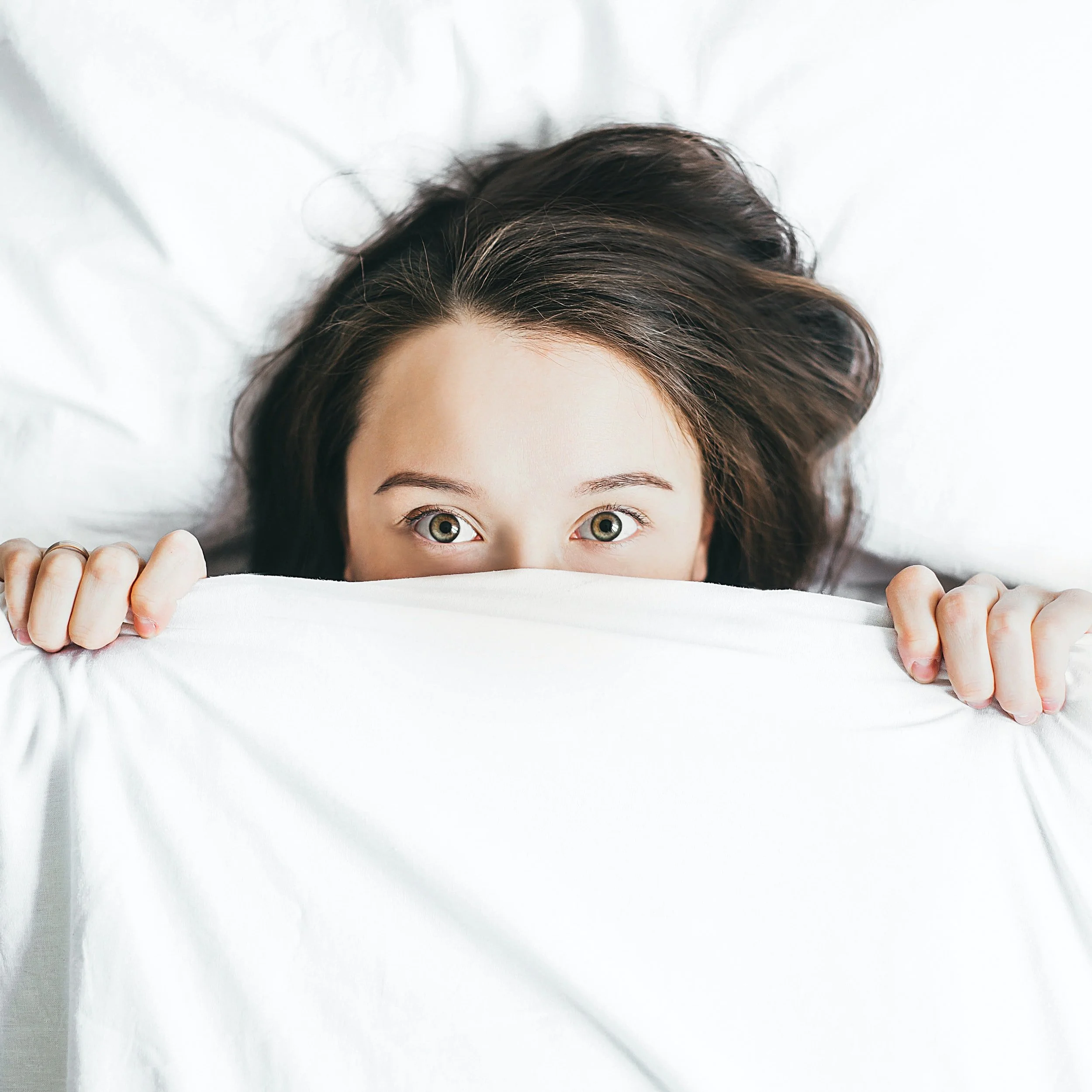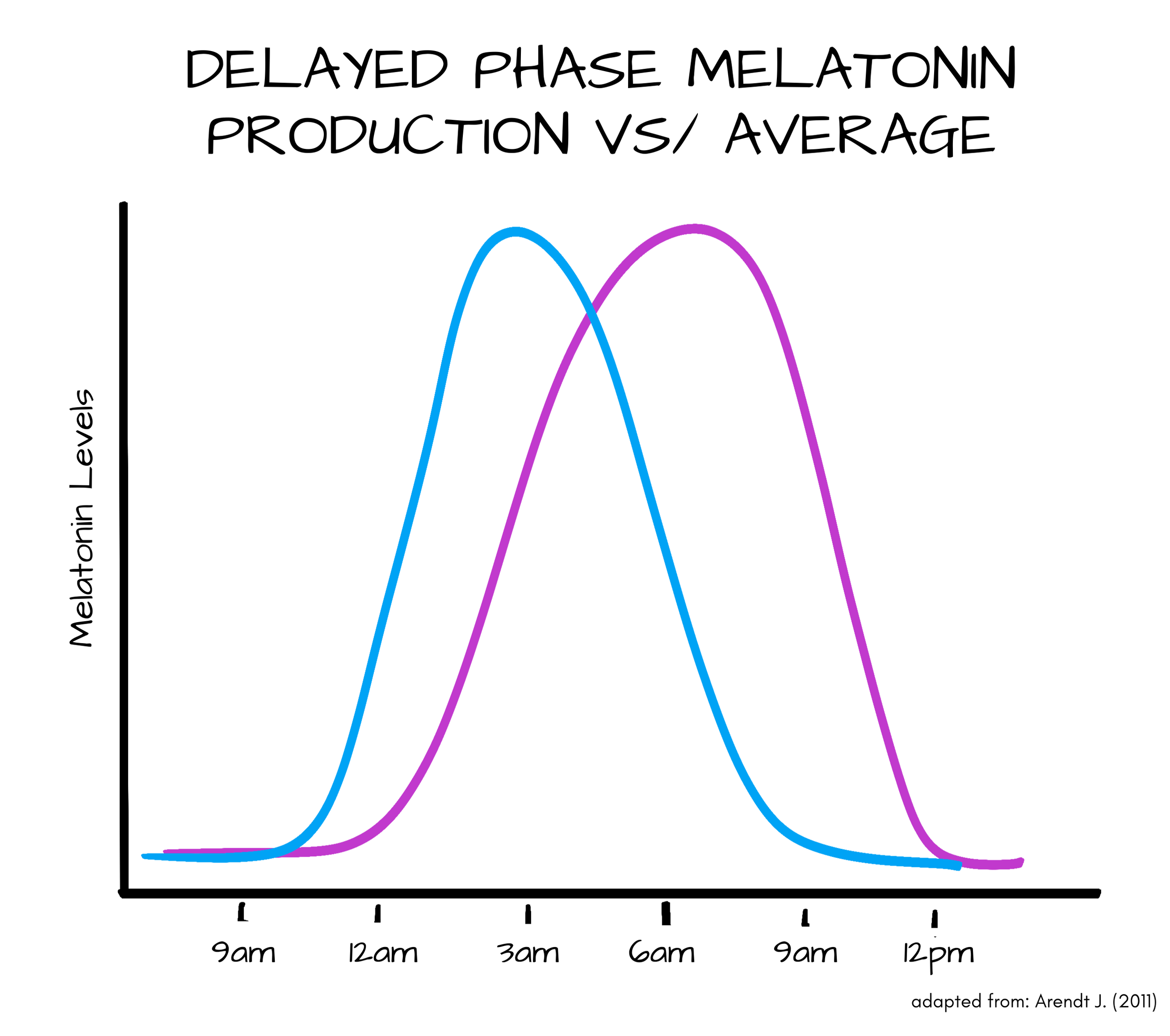QUIETING YOUR BRAIN
Tackling the Most Difficult ADHD Sleep Issue for a Blissful Night’s Sleep
[2024 Update]
There are many sleep issues that ADHD brains struggle with. But one of the most prevalent is racing thoughts that refuse to quiet down just because the clock says it’s bedtime. Several things make this extra hard for ADHD brains- a depleted executive functioning system, disrupted circadian rhythms, and a lack of sleep-inducing bedtime rituals. Because of all these differences that make our brains less sleep-prone and because sleep is so important for our brains, it’s extra important that we gather all our tools and to get the zzz’s flowing.
Getting to sleep can feel like a herculean task at the end of the day. Which is the cruelest time for a herculean task to pop up for ADHD brains!
The tank is empty, and so, doing the things that you need to in order to get the rest your brain needs to fill the tank? Ugh!! It’s the definition of ADHD symptoms getting in the way of ADHD treatment!
But why is it so hard?
Sleep seems like it should just be something that we fall into, like a warm tub on a cold and rainy day. Why is it that our oh-so-sleepy brains refuse to do that one thing that would make them feel better?
The 3 top reasons ADHD brains struggle to quiet down and fall asleep.
A Depleted Executive Functioning System
In order to get to bed in the first place, we need to do things like INHIBIT our desire to watch just one more show, START getting ready for bed, or—most difficult of all—STOP scrolling through social media.nd out
And what tells our brain to do things like INHIBIT, START and STOP?!? You guessed it! Our executive functioning system. Our executive functioning system works like it’s powered by a battery-one that is continually depleted every time it’s used throughout the day.
So by the time we get to the end of our day, that EF battery is pretty darn depleted and has a really hard time telling us to do the things we need to do to quiet our chatty brains.
2. Circadian Rhythms and the ADHD Brain
ADHD brains are more likely to have delayed sleep onset- meaning they’re biologically wired to not feel sleepy until later than many other brains. (1)
It’s just another one of the areas where modern life (ie-bosses that insist you’re in the office at 8 am) isn’t set up to work well for ADHD brains.
There’s nothing inherently wrong with having a delayed sleep onset, provided you can wake up later too. But given that jobs and appointments (not to mention children) usually insist we are awake with the sun, having a body and brain that isn’t all that interested in hitting dreamland until 2 am, it means that we’re much more likely to miss out on valuable zzz’s. (1)
3. Landing the Plane: Bedtime Rituals
Our brains are like airplanes. During the day, while we’re working, playing, and otherwise interacting with the world, we are high above the clouds whizzing around at hyperspeed.
In order to sleep, however, we have to come in for a landing. But just like a plane, we can’t do that in an instant. We can’t nose dive from 30,000 feet and expect to land safely the minute we want to. We have to prepare.
We have to start our slow, gradual descent well ahead of time to get where we need to go. This preparation helps signal to our brains- “Oh, we’re about to do something different here- we can’t keep operating at hyperspeed.”
For most of our brains, this gradual desent from our daily life cruising altitude takes about an hour. An hour of separation from screens, from work, and from other stimulating activities (like socializing or creative projects) to get our brain sleepy enough to land that plane.
The Problem with Screens
WARNING: UNPOPULAR BUT ALSO UNSURPRISING FACTOID COMING UP:
Screens are a bit part of the ADHD sleep problem.
Why?
They’re engaging and stimulating, emit sleep-banishing blue and pulsing lights, and are an endless source of ADHD black holes.
Now, if hearing that screens are keeping you from sleeping makes you groan— I hear you! Me too!
Watching a show, cuddled on the couch with my hubby, is one of my favorite ways of chilling at the end of the day, too. And I want to do as much of it as possible- I don’t want to stop an hour early, so my brain can quiet down.
But the thing is, while screens are a great way of getting some of the passive enjoyment we all crave at the end of the day, they have 3 major sleep-banishing issues:
They emit blue light, which inhibits your brain’s production of melatonin (aka sleepy juice) (3)
They emit pulsing lights: the rapid ebb and flow of the light on our screens, particularly video, causes confusion in our circadian rhythms that tells our brains it’s not time for bed yet. (4)
They’re black holes. Whether it is the next episode countdown, hyperlinks, or endless newsfeeds, screens have been developed specifically to keep you absorbed long past your original purpose.
Coming in for a landing: ADHD-friendly Bedtime Rituals
The hour before you go to bed is your opportunity to start to slow down and shut down. It’s your time to disconnect from your life, its stresses and worries, and, one by one, shut down the various operating systems of your brain.
One of the biggest objections I hear, though, when I talk about shutting screens off an hour before sleep is- what in the world am I supposed to do?
I get that. We spend so much of our time devoted to screens it can feel hard to fill our time without them. I also know that extra-active brains can feel frantic when suddenly faced with only themselves to occupy them.
But there are lots of things that you can do without a screen that can help you distance yourself from the stress, anxiety, excitement, and racing brain that fuels your life and start landing that plane.
Building a Bedtime Ritual You Love: Landing Hour Activities.
The trick to creating a bedtime ritual that sticks is doing things that you might even look forward to and aren’t just a whole lot of drudgery (but not enjoy so much you can’t stop doing them). It’s a tricky trick! But one that is possible with enough trial and error.
The first step is to brainstorm some ideas for activities that can help your brain slow down and don’t involve screens.
Here are some ideas to get you started:
Once you’ve got a list of things that might work for you.
Add in the things you need to do (i.e., brush your teeth, lock up the house, get into your PJs) and create an order that makes sense.
Use this order to create a routine that you can follow each night to signal to your brain that the shutdown is coming. (Check out my routine creation workbook for more tips on how to make this work).
These calm, soothing rituals will start to shut down your brain, slow down your body, and help you come in for a smooth, gentle landing.
What helps you land your plane? Share your favorite bedtime rituals below.
Ready to shift from
meltdown to mastery?
This online course has been designed specifically to help teach the strategies ADHD brains need to help them move from overwhelm and meltdowns to confident emotional mastery.
References:
Coogan, A. and McGowan, N. (2017). A systematic review of circadian function, chronotype and chronotherapy in attention deficit hyperactivity disorder. Adhd Attention Deficit and Hyperactivity Disorders, 9(3), 129-147. https://doi.org/10.1007/s12402-016-0214-5
Ryan, A., Matsangas, P., Anglemyer, A., & Shattuck, N. L. (2017). Improving sleep attributes of military personnel in operational settings by controlling exposure to blue light. Proceedings of the Human Factors and Ergonomics Society Annual Meeting, 61(1), 906-910. https://doi.org/10.1177/1541931213601705
Bryk AA, Blagonravov ML, Goryachev VA, Chibisov SM, Azova MM, Syatkin SP. Daytime Exposure to Blue Light Alters Cardiovascular Circadian Rhythms, Electrolyte Excretion and Melatonin Production. Pathophysiology. 2022; 29(1):118-133. https://doi.org/10.3390/pathophysiology29010011
Blume, C., Garbazza, C., & Spitschan, M. (2019). Effects of light on human circadian rhythms, sleep, and mood. https://doi.org/10.31219/osf.io/qcfkr
Arendt J. The Pineal Gland and Pineal Tumours. [Updated 2011 Jan 1]. In: Feingold KR, Anawalt B, Blackman MR, et al., editors. Endotext [Internet]. South Dartmouth (MA): MDText.com, Inc.; 2000-. Available from: https://www.ncbi.nlm.nih.gov/sites/books/NBK279108/
Want to know more about
thriving with ADHD?
Check out these other articles:














Why We Can’t “Just Tune It Out”
Hypersensitivity, Sensory Sensitivity and the ADHD Experience